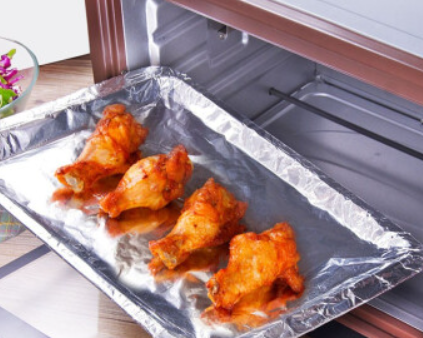Aluminum foil is a ubiquitous household item, found in kitchens around the world for wrapping leftovers, cooking, and even crafting. Despite its widespread use, there are persistent misconceptions about its flammability. Let’s delve into the science behind aluminum foil and explore whether it is indeed flammable.
Understanding Aluminum Foil
Aluminum foil is a thin sheet of aluminum metal that undergoes a rolling process to achieve its characteristic thinness. It is prized for its malleability, conductivity, and ability to withstand high temperatures. These properties make aluminum foil a versatile material for various applications, from cooking to insulation.

The Myth of Flammability
One common misconception is that aluminum foil is highly flammable. This belief likely stems from observations of aluminum’s behavior in other forms, such as aluminum cans or metal shavings, which can ignite under certain conditions. However, aluminum foil behaves differently due to its unique properties and structure.
Understanding Combustion
To understand whether aluminum foil is flammable, it’s essential to grasp the concept of combustion. Combustion occurs when a substance reacts with oxygen in the presence of heat, resulting in the release of energy in the form of heat and light. For most materials, including metals, combustion occurs when they reach their ignition temperature and react with oxygen.

Aluminum Foil and Combustibility
Aluminum foil has a high melting point of approximately 660 degrees Celsius (1220 degrees Fahrenheit), significantly higher than typical cooking temperatures or the temperatures reached in household fires. As a result, aluminum foil does not ignite or burn under normal cooking conditions.
Non-Flammability Under Normal Conditions
Under typical kitchen conditions, such as when used to wrap food or line baking trays, aluminum foil does not pose a fire hazard. It can withstand oven temperatures well above 200 degrees Celsius (392 degrees Fahrenheit) without catching fire or releasing toxic fumes. Moreover, aluminum is non-combustible in air, meaning it does not support combustion even when exposed to flames.

Fire Safety Considerations
While aluminum foil itself is not flammable, it’s essential to exercise caution when using it in conjunction with other materials. For instance, placing aluminum foil too close to heating elements in ovens or stovetops can lead to overheating and potentially cause adjacent combustible materials to ignite. Additionally, wrapping highly flammable items, such as oily foods or flammable chemicals, in aluminum foil can increase the risk of fire if mishandled.
Заключение
In conclusion, aluminum foil is not inherently flammable under normal usage conditions. Its high melting point and non-combustible nature make it a safe and reliable material for cooking, packaging, and various household applications. However, proper safety precautions should always be observed to prevent fire hazards, especially when using aluminum foil near heat sources or with flammable materials. By understanding the science behind aluminum foil and dispelling myths about its flammability, we can use this versatile material safely and effectively in our daily lives.


